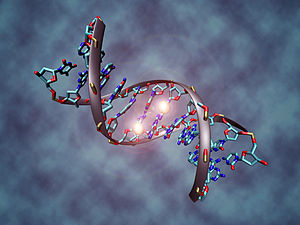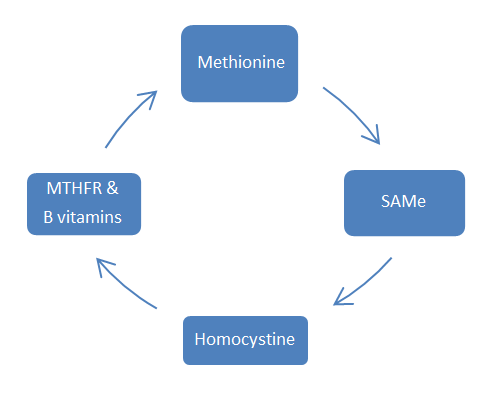By Ameer Rosic RHN, FDN
Guest Writer for Wake Up World
Every cell in your body carries your entire genetic code. How do the cells in your eyes know to make more eye-cells and not heart-cells? Why do liver cells not grow in your bones?
The methylation cycle, an essential bodily function that occurs in hundreds of processes throughout the body, is the key to gene expression. It turns off particular segments of DNA in each cell, instructing your eye cells to make only eye cells not liver cells.
You want your body to be a good methylator and not just for the purpose of healthy gene expression. This fundamental cycle also protects and stabilizes chromosomes, activates and deactivates stress hormones, co-creates neurotransmitters, contributes to ATP energy production, aids in detoxification, regulates growth and healing hormones, helps in the development and function of the Autonomic Nervous System (ANS), and refines the immune system.
[pro_ad_display_adzone id=”110028″]
Methylation is a chemical reaction in which a methyl group (one carbon atom linked to three hydrogen atoms, CH3) is passed from one molecule to another. This cycle can be compared to a chain of dominos set into motion:
- Domino 1: Methionine is an amino acid found widely in food. By means of ATP and magnesium, methionine gains a methyl group (CH3) and becomes SAMe.
- Domino 2: SAMe (S-adenosine methionine) travels around the body in the blood stream donating its methyl groups to various molecules that need it to carry out body functions. After SAMe donates its methyl group, it is called homocysteine.
- Domino 3: Homocysteine has “space” for a methyl group. With the help of the MTHFR enzyme and B vitamins, homocysteine is recycled.
- Domino 4: MTHFR is a gene that caries the instructions for the creation of an enzyme called methylenetetrahydrofolate reductase. In a chemical reaction, this enzyme and B vitamins “give” homocysteine a methyl group.
- Domino 5: With this new addition of a methyl group, homocysteine becomes methionine, completing the cycle.
The addition or loss of a methyl group in a molecule starts the domino effect. For example, methylation of DNA signals cells to turn off particular genes. When a methyl group attaches to specific amino acids it creates the neurotransmitters melatonin, serotonin, and dopamine, which regulate your mental health, moods, sleep cycles, and overall sense of wellbeing.
Though the methylation cycle is fundamental, it is hardly simple. There is a lot of room for glitches, and any one of the glitches can cascade into health problems such as chronic fatigue syndrome, sleep disorders, poor adaptation to stress, hormone imbalances, cancer, and genetic disorders.
Ultimately, if you are under-methylating, you are going to feel crummy or worse. People with poor methylation often have elevated homocysteine levels that irritate blood vessels, cause blood clots, and harden arteries increasing the risk for a heart attack or a stroke. Also, when the body needs methyl groups to continue functioning, it may steal them off genes and that may “turn on” a gene that is best turned off – like a cancer gene.
Histamine is a neurotransmitter and part of the immune response that triggers inflammation. In a healthy person, histamine is inactivated during the methylation cycle when SAMe donates a methyl group to it. If the methylation cycle is inefficient and there is not an available methyl group to donate, histamine levels rise causing inflammation. Over-the-counter allergy medicines are anti-histamines that relieve itchy eyes, sneezing, and runny noses associated with allergies as well as other immune and inflammation related issues. If a person suffers with chronic allergies symptoms, it could be a sign that she is under-methylating.
A variety of factors can cause a glitch in the methylation cycle including a high sugar diet, vitamin B12 deficiency, mal-absorption/malnutrition, toxins, and stress. There is also a mutation that can occur in the MTHFR gene that disrupts the production of the methylenetetrahydrofolate reductase enzyme needed in the Domino 4 phase of the cycle. Fortunately, there is a simple genetic test that will inform a person if he has this genetic mutation so that he can receive proper medical and nutritional support.
If you feel run down or not yourself, it may be worth your time to test the efficiency of your methylation cycle. A simple blood test will measure the ratio of SAMe to S-adenosylhomocysteine (SAH) indicating if there is a glitch in the system. Be sure to share your test results with a doctor or practitioner who understands methylation and will guide you toward dietary and lifestyle changes that will optimize your methylation and optimize your health.
Optimally yours,
Ameer Rosic RHN, FDN
About the author:
Ameer Rosic is a Registered Holistic Nutritionist, Functional Diagnostic Nutritionist and Functional Medicine practitioner. As a leading expert in nutrition, optimal-aging, methylation, fitness and wellness, Ameer is consulted worldwide and gives lectures, seminars and certification workshops around the world. He is your guide to living optimally.
In 2012, Ameer won The Canadian Kettlebell Biathlon Championship. He is the author of “The Kettlebell Advantage” (ISBN: 9781465875594) and is currently finishing his second book titled “Diagnostic testing and Functional Medicine.” His unique approach to fitness and wellness is now the feature of the TV Show, “Shape up with Ameer: Kettlebell Conditioning.” Helpful advice can also be found on “Optimal Health Show,” a feature on his YouTube channel and his weekly Experts panel with top doctors.
Ameer endorses and teaches the martial arts philosophy of life-balance and believes in the ancient teachings of Hippocrates: “Let Food be Thy Medicine.”
Respect your body, it’s your temple.
Visit Ameer’s website www.AmeerRosic.com or connect with him on Twitter, Facebook or LinkedIn
[pro_ad_display_adzone id=”110027″]








